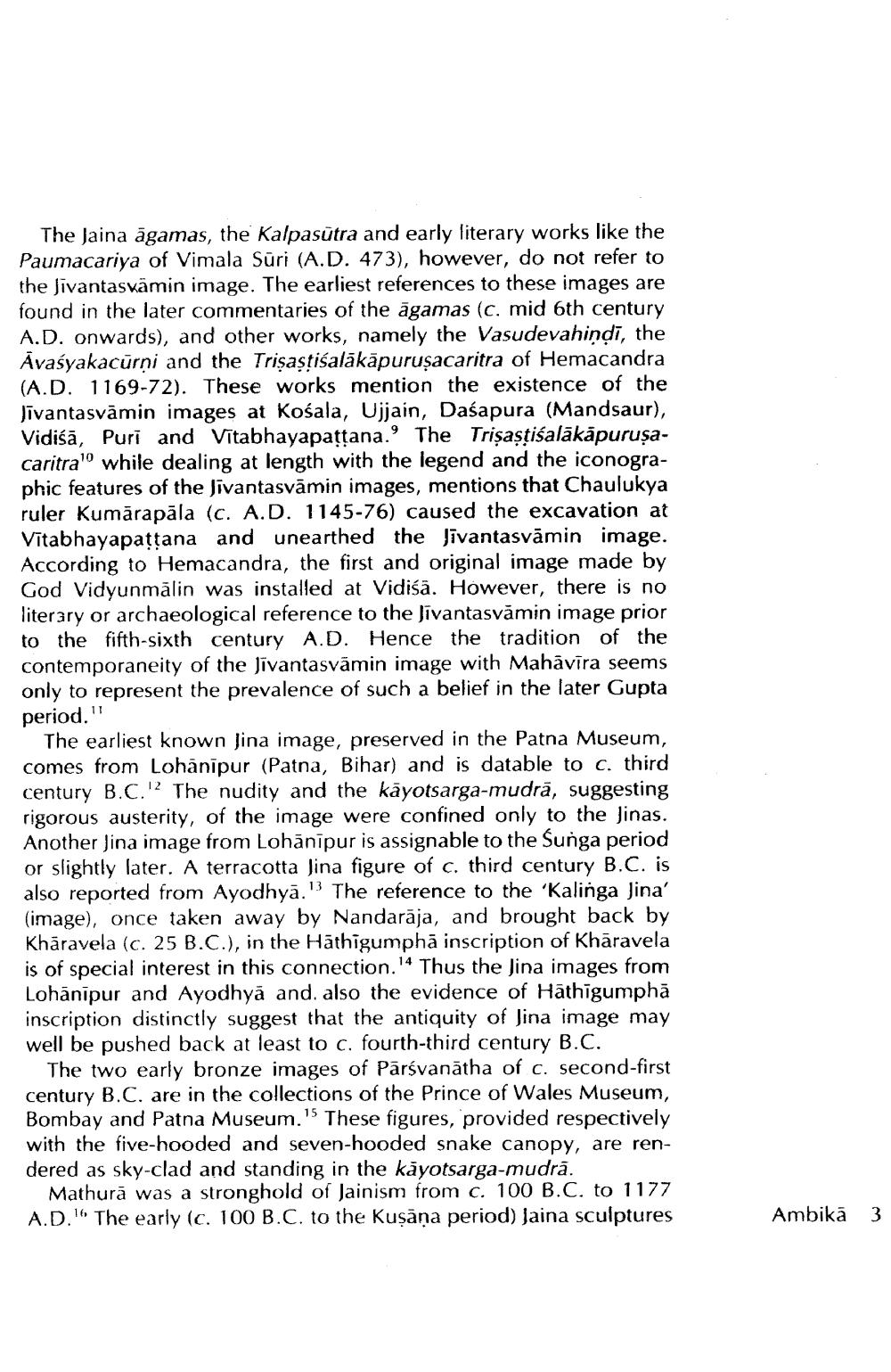________________
The Jaina āgamas, the Kalpasūtra and early literary works like the Paumacariya of Vimala Sūri (A.D. 473), however, do not refer to the Jivantaswamin image. The earliest references to these images are found in the later commentaries of the āgamas (c. mid 6th century A.D. onwards), and other works, namely the Vasudevahindi, the Avaśyakacūrni and the Trisastiśalākāpurusacaritra of Hemacandra (A.D. 1169-72). These works mention the existence of the Jivantasvāmin images at Kośala, Ujjain, Daśapura (Mandsaur), Vidiśā, Puri and Vitabhayapattana. The Trişastiśalākāpurusacaritra' while dealing at length with the legend and the iconographic features of the Jivantasvāmin images, mentions that Chaulukya ruler Kumārapāla (c. A.D. 1145-76) caused the excavation at Vitabhayapattana and unearthed the livantasvāmin image. According to Hemacandra, the first and original image made by God Vidyunmālin was installed at Vidiśā. However, there is no literary or archaeological reference to the Jivantasvămin image prior to the fifth-sixth century A.D. Hence the tradition of the contemporaneity of the livantasvämin image with Mahavira seems only to represent the prevalence of such a belief in the later Gupta period."
The earliest known Jina image, preserved in the Patna Museum, comes from Lohānipur (Patna, Bihar) and is datable to c. third century B.C.12 The nudity and the kāyotsarga-mudrā, suggesting rigorous austerity, of the image were confined only to the Jinas. Another Jina image from Lohānipur is assignable to the Sunga period or slightly later. A terracotta Jina figure of c. third century B.C. is also reported from Ayodhyā." The reference to the 'Kalinga lina' (image), once taken away by Nandarāja, and brought back by Khāravela (c. 25 B.C.), in the Hāthigumpha inscription of Khāravela is of special interest in this connection.'4 Thus the Jina images from Lohānipur and Ayodhya and also the evidence of Hathigumphā inscription distinctly suggest that the antiquity of Jina image may well be pushed back at least to c. fourth-third century B.C.
The two early bronze images of Pārsvanātha of c. second-first century B.C. are in the collections of the Prince of Wales Museum, Bombay and Patna Museum." These figures, provided respectively with the five-hooded and seven-hooded snake canopy, are rendered as sky-clad and standing in the kāyotsarga-mudrā.
Mathurā was a stronghold of Jainism from c. 100 B.C. to 1177 A.D." The early (c. 100 B.C. to the Kusāna period) Jaina sculptures
Ambikā 3




